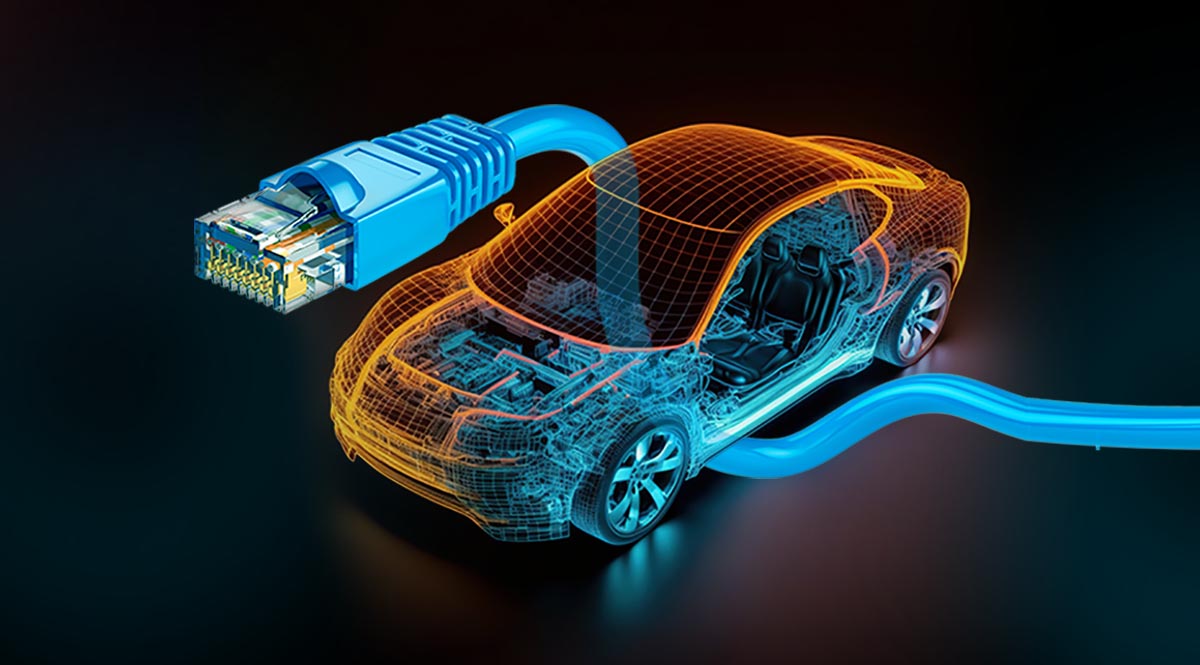The automotive industry is undergoing a significant transformation, with advancements in technology leading to more sophisticated vehicles. Central to this evolution is the use of Ethernet networks, which facilitate high-speed data communication among various electronic control units (ECUs) within vehicles. Electrical and electronics engineers play a pivotal role in managing these networks, enabling continuous monitoring, configuration, and troubleshooting even after production. This capability enhances vehicle performance, safety, and user experience. This essay explores how engineers can centrally manage in-vehicle automotive Ethernet networks and the methodologies involved.
Understanding Automotive Ethernet
Automotive Ethernet has emerged as a robust communication protocol designed to support the increasing data demands of modern vehicles. Unlike traditional bus systems like CAN (Controller Area Network), Ethernet can transmit large amounts of data quickly, making it suitable for applications such as advanced driver-assistance systems (ADAS), infotainment, and vehicle-to-everything (V2X) communication. With Ethernet’s flexibility and scalability, it has become the backbone for networking in vehicles.
Centralized Management: Key Objectives
The primary goals of centralized management of automotive Ethernet networks include:
- Real-time Monitoring: Ensuring that all network components are functioning correctly and efficiently.
- Configuration: Adjusting settings for optimal performance based on real-time data and user preferences.
- Troubleshooting: Identifying and rectifying issues that may arise during the vehicle’s lifecycle.
To achieve these objectives, engineers employ various strategies and technologies.
Infrastructure for Central Management
- Centralized Control Units: A centralized control unit (CCU) serves as the brain of the Ethernet network, managing data flow and communication between ECUs. Platforms like Sonatus Foundation’s Network Services can execute commands, monitor data packets, and analyze performance metrics in real-time.
- Cloud Connectivity: By leveraging cloud technology, engineers can gain remote access to the vehicle’s network data. This connectivity allows for continuous monitoring and troubleshooting without needing physical access to the vehicle, which is especially useful in post-production scenarios.
- Diagnostic Tools and Protocols: Engineers utilize standardized diagnostic protocols such as Unified Diagnostic Services (UDS) or On-Board Diagnostics II (OBD-II) to communicate with the ECUs. These tools facilitate remote access for troubleshooting and performance assessment.
Real-time Monitoring and Data Analytics
Real-time monitoring is crucial for maintaining network health. Engineers implement various techniques:
- Network Monitoring Systems: These systems continuously track network performance, looking for anomalies in data transmission, latency issues, or communication breakdowns. By employing software that can visualize network traffic, engineers can quickly identify bottlenecks or failures.
- Data Analytics: Engineers analyze data gathered from the network to discern patterns that may indicate underlying issues. Machine learning algorithms can be applied to predict failures based on historical data, allowing proactive measures before significant problems arise.
- Alerts and Notifications: Configurable alerts can inform engineers of abnormal conditions, enabling swift responses to potential issues. For example, if an ECU reports a fault, an alert can be sent to the central management system, prompting further investigation.
Configuration Management
Configuration management is vital for optimizing network performance. Engineers can centrally manage configurations through:
- Over-the-Air (OTA) Updates: OTA technology allows for remote software updates to ECUs, ensuring they operate with the latest firmware and security patches. This capability not only enhances performance but also addresses vulnerabilities that may arise over time.
- Dynamic Configuration: Engineers can adjust network settings based on changing requirements or conditions. For instance, if a vehicle is operating in a high-traffic environment, bandwidth allocation can be modified to prioritize critical applications such as safety systems.
- User Customization: Centralized management systems can also facilitate user preferences, allowing drivers to configure settings related to infotainment and other vehicle systems, ensuring a tailored experience.
Troubleshooting and Diagnostics
Even with robust monitoring and configuration capabilities, issues will inevitably arise. Engineers can manage troubleshooting through:
- Remote Diagnostic Capabilities: By utilizing diagnostic tools that connect to the network remotely, engineers can run tests and analyze logs to identify faults without needing to physically access the vehicle.
- Error Logging and Analysis: When issues occur, error logs generated by the ECUs can provide insights into the nature of the problem. Engineers can analyze these logs to trace back to the root cause, allowing for informed decisions on repairs or adjustments.
- Simulation and Testing: Before deploying changes to the network, engineers can use simulation tools to test configurations or firmware updates. This practice reduces the risk of introducing new issues into the live environment.
Post-Production Management
One of the standout features of centralized management is its applicability even after a vehicle has left the production line. Engineers can:
- Lifecycle Monitoring: Post-production, vehicles can be monitored for performance metrics, enabling manufacturers to gather data for improving future models.
- Warranty Management: Centralized management allows for effective tracking of warranty-related issues. Engineers can assess whether problems are widespread and determine if they require a recall or a software update.
- Customer Feedback Integration: By analyzing data and feedback from customers, manufacturers can continuously improve vehicle performance, adapting to consumer needs and preferences.
Conclusion
The management of in-vehicle automotive Ethernet networks is a complex but essential task that electrical and electronics engineers are increasingly equipped to handle. Through centralized systems, real-time monitoring, dynamic configuration, and effective troubleshooting methods, engineers can ensure the smooth operation of Ethernet networks within vehicles. This management capability not only enhances vehicle performance and safety but also supports the ongoing evolution of the automotive industry, paving the way for smarter, more connected vehicles. As technology advances, the role of engineers in this domain will only become more critical, driving innovation and ensuring that vehicles can meet the demands of the future.
